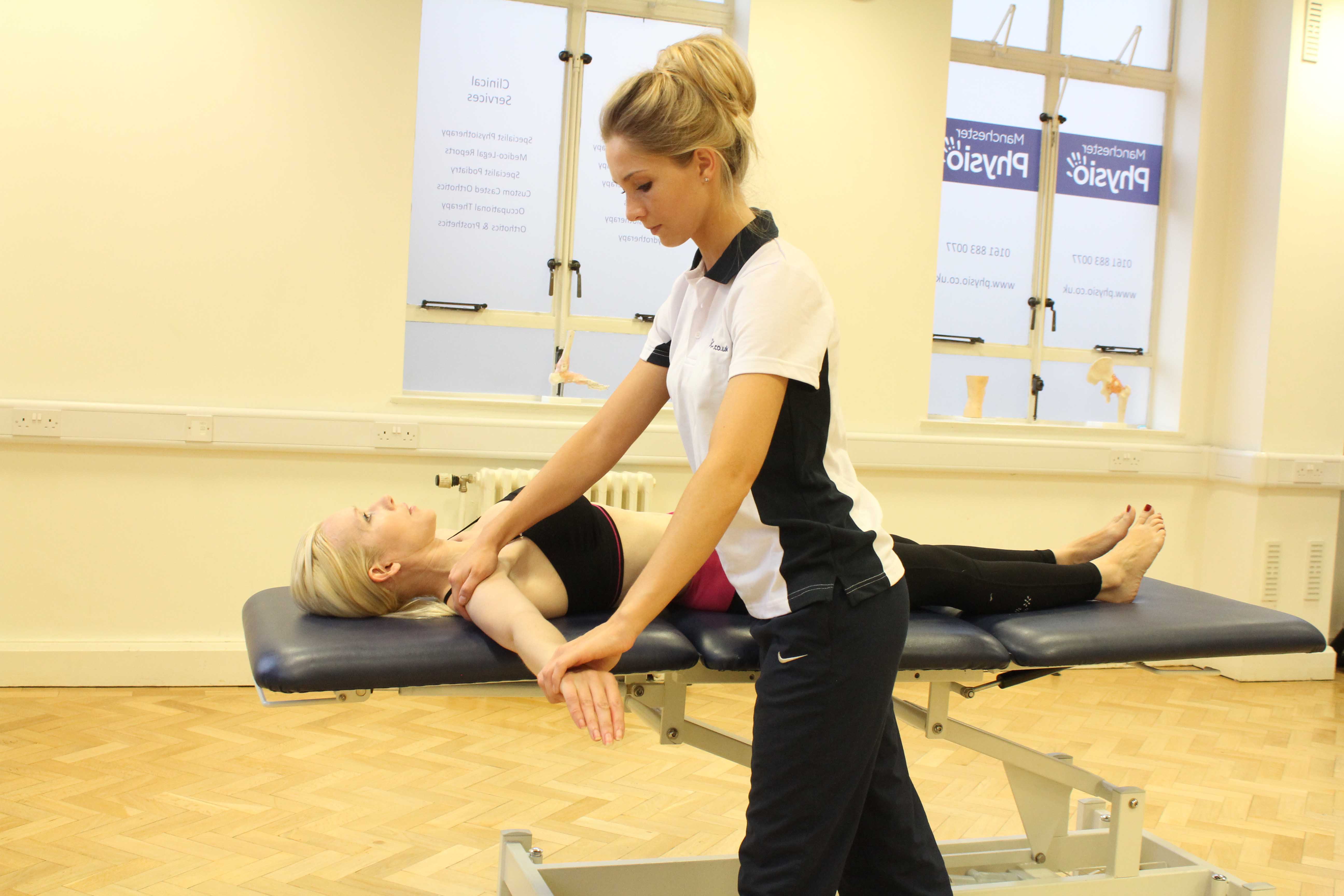Forearm Amputation Surgery
There are two main forearm amputation surgeries, distal forearm surgery and proximal forearm surgery.
Distal forearm surgery aims to maintain the length of the forearm allowing ease of use of prosthesis whilst considering the structures that are needed for padding. As most of the tissues are avascular structures, such as fascia and tendon, this limits their use for padding the newly formed stump. Therefore, the surgeon compromises between functional length and adequate padding aiming to amputate between the distal and middle third of the forearm.
Proximal forearm surgery leaves a relatively short stump with approximately 4cm of the ulna intact. To facilitate prosthetic fitting the biceps tendon is detached and reattached near the top of the ulna allowing full elbow extension. Preserving the elbow joint is the aim from this surgery; this may result in a relatively short stump. Maintaining the elbow joint helps to improve the arm function.
 Above: Massage and mobilisations of the arm and shoulder by a specilaist massage therapist
Above: Massage and mobilisations of the arm and shoulder by a specilaist massage therapistPhysiotherapy for Forearm Amputation
Rehabilitation can be carried out by a physiotherapist or occupational therapist. The aim of therapy will be to teach new skills allowing the amputee to adaptive to life with their missing limb. Treatment will start when the individual is still on the ward. The physiotherapist will work with and encourage the patient to get out of bed and mobilise as soon as possible, as this will assist with recovery from surgery. When appropriate the physiotherapist will develop a treatment plan and goals to guide you through recovery.
Whether you choose life with or without a prosthesis you will still benefit from rehabilitation with a physiotherapist. Physiotherapy for forearm amputation has been divided into two different treatments:
Prosthesis for a Forearm Amputation
Prostheses for a Forearm Amputation
A prosthesis is an artificial arm aiming to replace an element of the loss of function from the amputation. The patient will normally choose either a functional prosthesis or a cosmetic prosthesis.
- Functional Prosthesis
- Cosmetic Prosthesis
Summary
A forearm amputation occurs below the elbow joint. It will be the surgeon who will decide at what level to amputate taking into consideration any trauma and/or disease. After surgery you will be offered physiotherapy to help you learn new skills helping you to adjust to life with a missing limb. You may wish to be fitted with a prosthesis which can help you carry out these new skills. To arrange an assessment call Physio.co.uk on 0330 088 7800, or book an appointment online today!.

 0330 088 7800
0330 088 7800

































